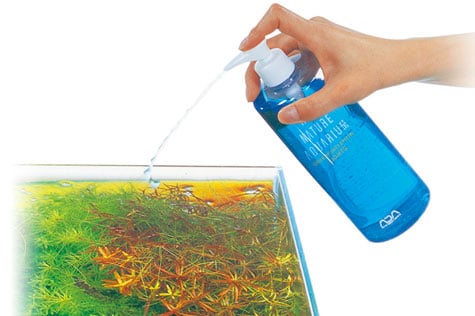
We may sometimes feel that the leaf colors of aquatic plants are fading. This is mainly due to lack of some nutrients essential for aquatic plants. What nutrients are contained in liquid fertilizers for the growth of aquatic plants in aquariums?
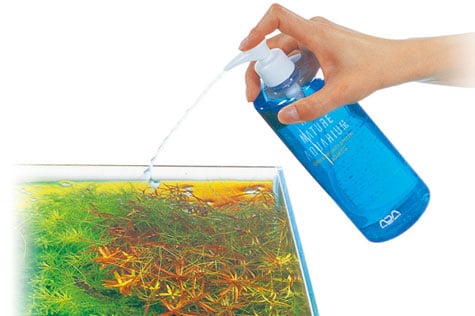
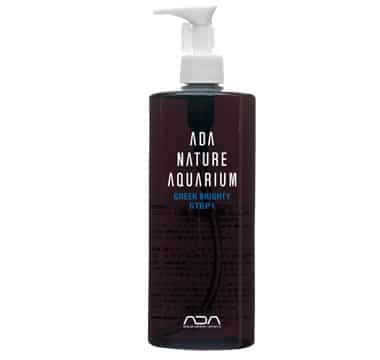 Green Brighty STEP 1
Green Brighty STEP 1
STEP1 contains trace elements as major ingredients. Using desalinated deep seawater rich in natural minerals as a base, this fertilizer supplements all the trace elements essential for aquatic plants. The supply of trace elements can be assured by the fact that the measurement showed a high level of TDS, COD and Fe2+.
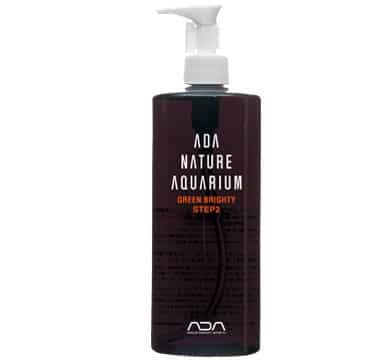 Green Brighty STEP 2
Green Brighty STEP 2
STEP2 is a liquid fertilizer containing particularly high amount of iron among the trace elements contained in STEP 1. This product shows the highest level of Fe2+, which is effective to produce vivid colours of aquatic plants, among the samples measured. Its high TDS and COD levels indicate that Green Brighty STEP2 contains rich trace elements.
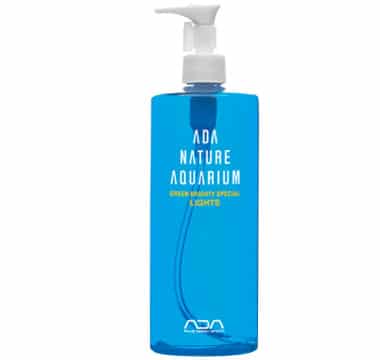 Green Brighty Special LIGHTS
Green Brighty Special LIGHTS
The greatest feature of Green Brighty Special LIGHTS is its outstandingly high nitrogen content. While a particular focus is usually placed on iron to achieve vivid leaf colours of aquatic plants, nitrogen is in fact equally important in that regard. In an aquarium only with a small number of fishes, the colours of aquatic plants may appear dull due to lack of nitrogen. Green Brighty Special LIGHTS also contains trace elements, iron and phosphate.
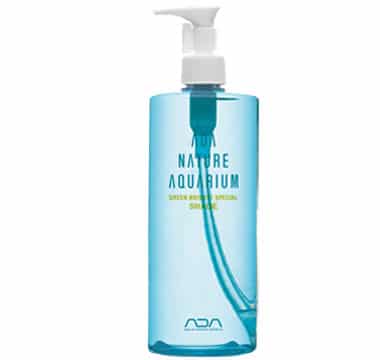 Green Brighty Special SHADE
Green Brighty Special SHADE
The nutrients contained in this fertilizer are basically the same as Green Brighty Special LIGHTS except for its low NH4 level and its relatively low pH as compared with other types of liquid fertiliers. Although not covered in this measurement, Green Brighty Special SHADE also contains abundant potassium. Desalinated deep seawater is used as the base liquid just as other products in the Green Brighty Series.
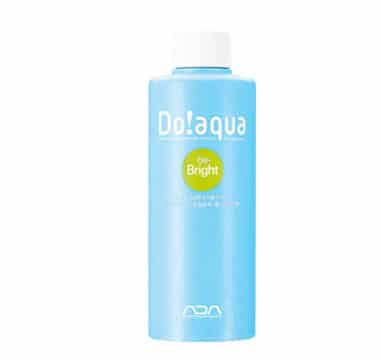 be Bright
be Bright
be Bright is a liquid fertilizer for Wabi- Kusa. It is usually applied by way of foliar application with a hand-spray or applica- tion to the Wabi-Kusa water. In addition to nitrogen as the main ingredient, be Bright also contains trace elements, iron and phosphate. When applied to an aquarium, it serves as an all-around liquid fertilizer.
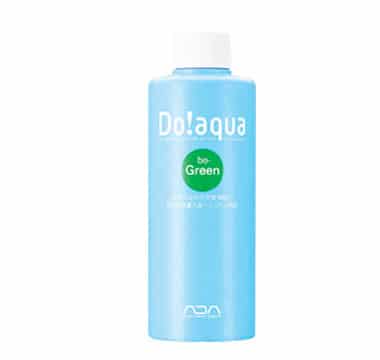 be Green (coming soon!)
be Green (coming soon!)
be Green has a great feature where it supplies trace elements and potassium at the same time. Its TDS level is higher than other fertilizers because of its high potassium content (potassium needs to be separately supplied with Brighty K if any fertilizer other than be Green is used). Reflecting its high trace element content, the COD level of be Green is also high.
Company A liquid fertilizer
The COD and NH4 levels of this fertilizer were unable to be measured with Pack Checker (proper measurement cannot be made if the fertilizer contains any chemical substance that does not exist in nature). Furthermore, the pH of this product was below 6.0, unlike other fertilizers, and its TDS level was also abnormal. In addition, no iron trace, which is beneficial to aquatic plants, was detected.
Company B liquid fertilizer
This fertilizer contains no nitrogen and phosphorus. However, the high TDS and COD levels imply that the fertilizer contains certain inorganic compounds. Iron is detected in the measurement, but it is not clear as to whether or not the iron content of this fertilizer is effective for the growth of aquatic plants considering its high dosage and recommended use during water change.
Aquatic plants start growing after a solid substrate has been set up and lighting and CO2 systems have been installed. But over time, it might be observed that the leaf colours of aquatic plants would have slightly faded. This is caused by lack of iron or trace elements and in some aquariums, due to lack of nitrogen. As can be seen from this fact, liquid fertilizers help improve the plant leaf colours and promote the healthy growth of aquatic plants, and thus are very important for creating an attractive Nature Aquarium.
The types and amounts of nutrients required vary by factors such as the condition of the substrate, the number of fishes kept in the aquarium and the density of plants. For this reason, several different types of liquid fertilizers are used in Nature Aquarium. What features and characteristics do these fertilizers have?
In this section, a comparison is made among six representative types of ADA liquid fertilizers and two types of liquid fertilizers released by other manufacturers. From the results of this comparison, the effectiveness of ADA liquid fertilizers was clearly observed.
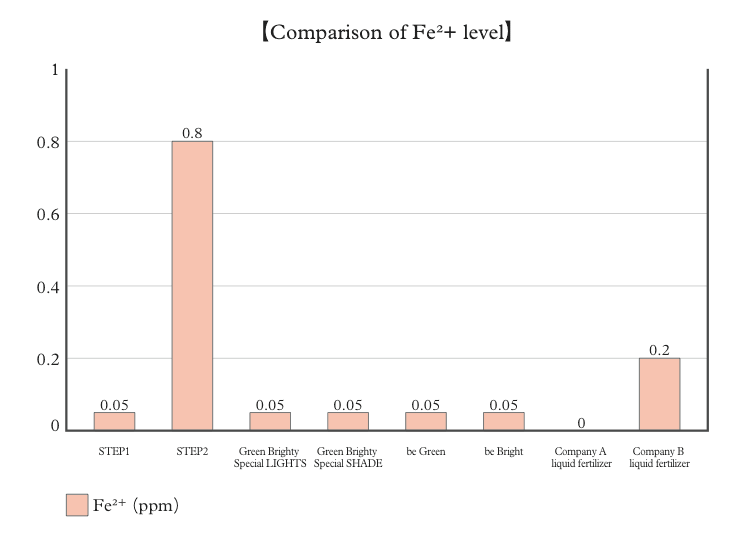
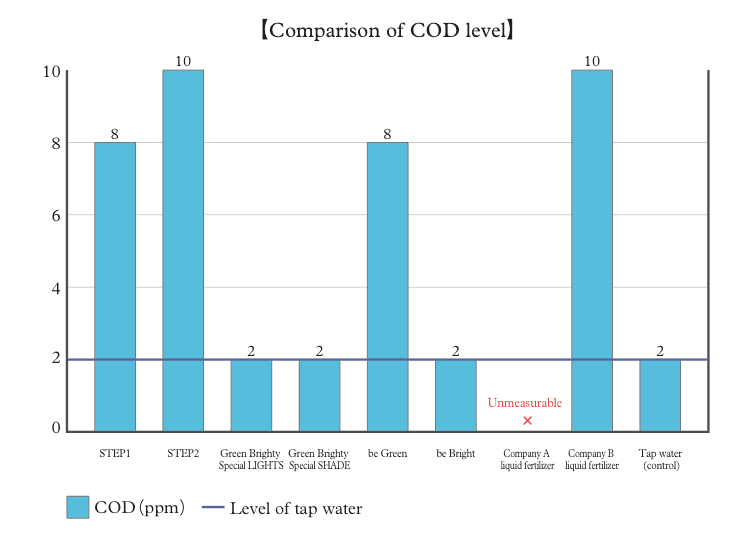
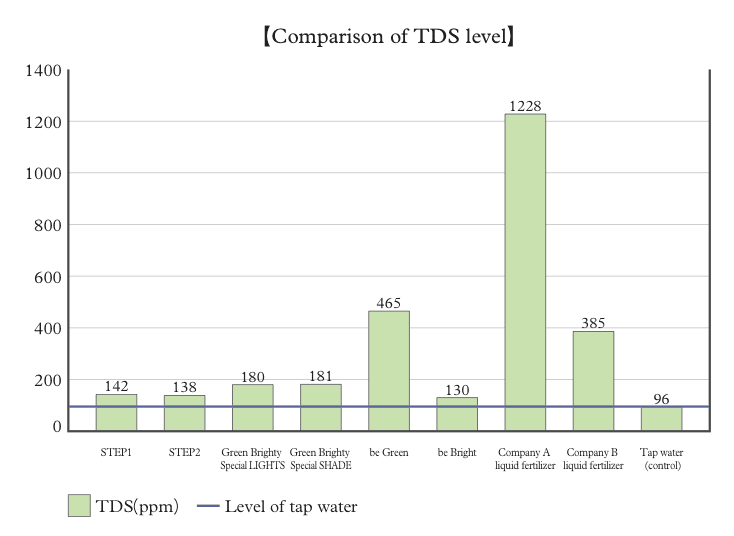

* Measurement of each parameter cannot be performed with the agent used due to extremely low concentration in the case where the specified dosage is directly applied to an aquarium. For this reason, the concentration is increased to 100 times of the original concentration in this comparison for experimental purposes.
* TDS stands for Total Dissolved Solids.
Like this article? Read more like this…
- ADA’s Substrate Article – Characteristics of Substrate Materials Unperceivable Just by Their Appearance
- Summer Time is Wabi-Kusa Time….get your Wabi on!
- Aquascaping: A Whole New Dimension
- How to Make Your Planted Tank Sparkle for a special occasion!
- The Power of ADA: A History of Takashi Amano and ADA
- The Power of ADA: The Philosophy of ADA
- The Story of ADA Super Jet Filters: A Note from Takashi Amano
- + Many more! – Explore our website!
